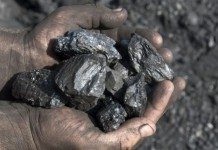
[miningmx.com] — THE Save Mapungubwe Coalition believes a tripartite agreement to be signed early next year between the governments of Botswana, South Africa and Zimbabwe could be key to blocking further development of Coal of Africa’s (CoAL’s) Vele mine.
Johan Verhoef, international coordinator for the Mapungubwe Transfrontier Conservation Area (TFCA), said: “I am convinced that agreement can be used to stop mining developments in the region, because it addresses the issue of what is the most appropriate use for the land.’
The agreement will commit the three governments to the implementation of the TFCA, which will straddle the three countries around the confluence of the Limpopo and Shashe Rivers in Limpopo Province.
The centrepiece is South Africa’s Mapungubwe National Park. Vele is situated east of Mapungubwe and just outside the buffer zone around the national park, but two other mining companies are now looking at projects inside the buffer zone.
The Vele mine has been closed since mid-August, and management is working through a remediation process with the department of environmental affairs and the department of water affairs dealing with various environmental permitting issues.
CoAL CEO John Wallington had initially hoped to have the mine back in operation by the end of December, but said last week this was now likely to be achieved sometime during the first quarter of next year.
The coalition – which includes among others the Peace Parks Foundation, the World Wide Fund for Nature SA and the Endangered Wildlife Trust (EWT) – wants Vele permanently closed. It is also gearing up to deal with the two other coal companies with projects near Mapungubwe.
These are Anglo American Coal, which has already bought some farms immediately south of Mapungubwe, and Australian junior Universal Coal, which holds prospecting rights in the Vhembe game reserve immediately west of Mapungubwe.
EWT CEO Yolan Friedmann said the coalition had its own interdict pending against Vele, for which a court date had yet to be set and which would be implemented should Vele be allowed to resume mining.
“We are not going to give up and go away,’ she said.
Friedmann also said the coalition had started a process with government to have the Mapungubwe area and other sensitive regions declared “inappropriate for mining’.
That issue has clearly already been raised with CoAL, judging by comments from Wallington on October 28 when the company released its September quarter results.
Wallington called for greater clarity and certainty over regulatory processes in South Africa.
He wanted “sensitive areas – where mining may not be allowed’ – to be more clearly demarcated and said it was “immoral’ to allow a company to invest millions on exploration work in an area where it had no intention of allowing mining.
CoAL has so far spent R600m on developing Vele, which raises the issue of compensation should the mine be shut down.
Friedmann said: “The requirement to designate sensitive areas which may not be mined is contained in the Minerals and Petroleum Resources Development Act. The government has just not implemented it so far.’
University of Pretoria attorney Carina du Toit said the tripartite agreement would not impose legal obligations on the SA government, unless they were followed up by the passing of local legislation.
“But what it does mean is that organisations like the EWT can go to court to pressure the SA government to meet its responsibilities in terms of the agreement.’
Non-government organisations have dug in their heels over Vele because they view the mine as the “thin edge of the wedge’ which, if allowed to proceed, would be followed by further mining and industrial development in the region.
According to Verhoef, “Vele has the potential to derail the entire TFCA process. I think Wallington’s comments – that you would not “see, hear or smell’ the mine when it is in operation – are crap.’
Werner Myburgh, CEO of the Peace Parks Foundation, said that the TFCA could over time become a conservation icon as important as the Kruger National Park.
“This TFCA will be of a similar size. It already has world heritage site status. It will have the big five game species and it has no malaria. All of that makes for a very attractive potential.”
He estimated about 5,000 permanent jobs would be created during the first 10 to 15 years by the various ecotourism developments.











